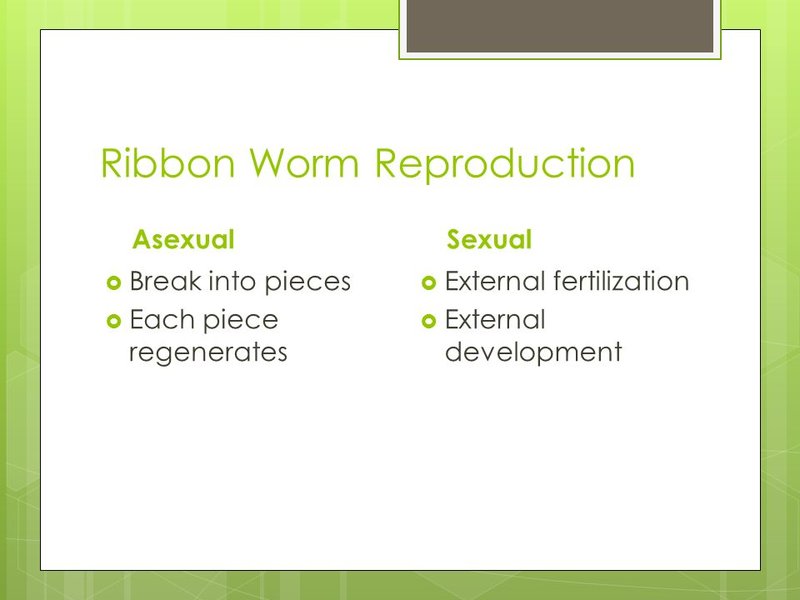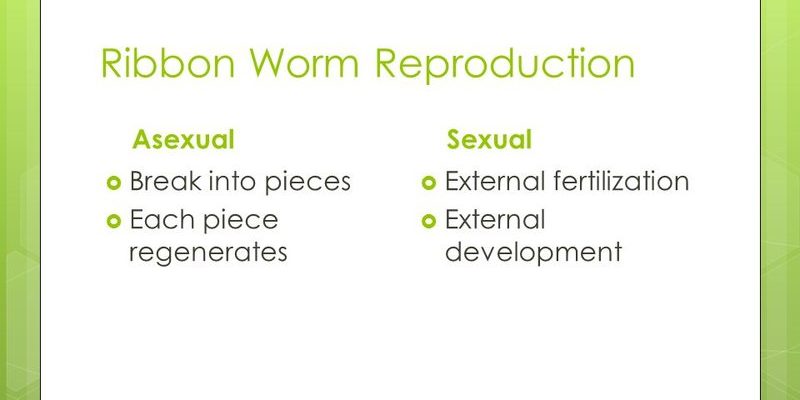
Imagine for a moment that you’re a ribbon worm navigating the ups and downs of life in the sea. You might be looking for a mate, or you could be able to create new life all on your own. This dual approach to reproduction allows ribbon worms to thrive in various environments, whether they’re popping up in stable habitats or facing challenges that make traditional mating difficult. So, let’s dive into the world of ribbon worm reproduction, exploring both sexual and asexual strategies in detail.
Understanding Ribbon Worms
Before we get into how ribbon worms reproduce, it’s essential to understand what they are. Ribbon worms, or *Nemertea*, are long, slender invertebrates that can be found in marine, freshwater, and even terrestrial environments. They range in size from just a few millimeters to over 30 meters long! Yes, you read that right—some can grow quite lengthy. These creatures are often brightly colored and are known for their unique hunting strategies, using a long, sticky proboscis to capture prey.
Ribbon worms are fascinating not only for their size but also for their complex bodily structures. They have a simple nervous system and lack a heart, yet they can move quite swiftly. Their flexibility and adaptability are impressive, allowing them to thrive in diverse habitats. But when it comes to ensuring the survival of their species, reproduction plays a crucial role.
Sexual Reproduction in Ribbon Worms
Most ribbon worm species reproduce sexually, which involves the merging of male and female gametes. This process can be quite a spectacle! During mating season, male and female ribbon worms will often share the same space. They release their sperm and eggs into the water, where fertilization occurs externally. It’s a bit like tossing confetti into a breeze—there’s a lot of chance involved!
Here’s a fun fact: some ribbon worm species are simultaneous hermaphrodites. This means they possess both male and female reproductive organs, allowing them to mate with any other individual they encounter. Think of it like a dating app for ribbon worms, where everybody has the potential to swipe right! This flexibility increases their chances of successful reproduction in varying environments.
Once fertilization occurs, the fertilized eggs develop into larvae, which eventually settle down into the ocean floor or other suitable habitats. Depending on the species, some might hatch into free-swimming larvae that can move away from the parental environment before settling down, making the process even more interesting.
Asexual Reproduction: A Different Approach
Now, let’s explore the other side of ribbon worm reproduction: asexual reproduction. This strategy allows these creatures to reproduce without the need for a mate. It might sound like a solitary endeavor, but it comes with its perks—like quicker population growth in stable environments.
Ribbon worms can reproduce asexually through a process called fragmentation. In this case, a part of the worm’s body breaks off and can develop into a new individual. It’s like if you accidentally sliced a piece of your pizza, and instead of waste, a whole new pizza appeared! This method not only helps with reproduction but also allows worms to recover from injuries.
Another form of asexual reproduction seen in some ribbon worms is budding. In this process, a new individual grows off the side of the parent worm. Eventually, the new worm detaches and starts its own life. While it may not be as flashy as sexual reproduction, it certainly gets the job done!
Benefits of Sexual Reproduction
So, why do ribbon worms bother with sexual reproduction at all? Well, the benefits are significant! For starters, sexual reproduction increases genetic diversity. This means that offspring can have unique traits that help them adapt to changing environments. Imagine living in a world where everyone looked the same—pretty boring, right?
Another advantage is the potential for evolutionary resilience. In the long run, genetically diverse populations are more likely to survive diseases, environmental changes, and other stresses. Also, by having the ability to mate, ribbon worms can spread their population across broader areas, which is crucial for finding new habitats or resources.
If you think about the challenges they face—predators, changing climates, and limited resources—having various reproduction strategies gives ribbon worms a better chance of survival. It’s like having a Swiss Army knife for survival: you’re prepared for whatever comes your way!
Challenges in Reproduction
Of course, no reproductive strategy is without challenges. For sexual reproduction, one of the most significant hurdles is finding a mate. Ribbon worms might not always be in close proximity to each other, making mating a bit of a treasure hunt. And even then, they may have difficulty finding compatible partners in their environment.
Asexual reproduction has its drawbacks too. While it allows for quick population growth, it can lead to decreased genetic diversity over time. This means that if the environment changes drastically or if a disease strikes, the entire lineage may be vulnerable. Essentially, while it’s convenient, it could set the stage for extinction in certain situations.
The balance between sexual and asexual reproduction is fascinating, highlighting nature’s complexity. You might wonder how ribbon worms manage to navigate these challenges, and the truth is, they’ve evolved to have a strategy for each situation.
Ribbon worms are a prime example of nature’s ingenuity in reproduction. With their ability to reproduce both sexually and asexually, they’ve set themselves up for success in various environments. The balance between these strategies shows how adaptable life can be, allowing for both diversity and resilience.
As these creatures continue to thrive, their unique ways of ensuring the survival of their species teach us valuable lessons about adaptability and the importance of genetic diversity. Whether you’re a fan of the ocean or just curious about the wonders of the natural world, ribbon worms offer a captivating glimpse into the marvels of life. So next time you see a worm—whether it’s squiggling in the soil or nearby in the ocean—remember the incredible story of survival and reproduction they embody.

